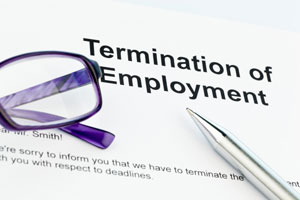Making or Defending an Employment Discrimination Case
Whether you are an employee filing a discrimination case or an employer who is defending one, the merits and outcome of the case will depend on the supporting evidence available. To prove discrimination, an employee needs to show that a negative impact resulted from a negative treatment due to a general, place of origin, family status, or any of the Human Rights Code (the "Code") protected personal characteristic. Discrimination could result from differential treatment or if a difference (e.g., disability) was not considered that needed to be.
 Often the most difficult factual issue in a discrimination case is proving that there is evidence of a link between the negative treatment or the negative impact experienced and the Code-protected personal characteristic. In making or defending an employment discrimination case it is important to be aware that not all differences in treatment are negative and that not all negative treatment is discriminatory.
Often the most difficult factual issue in a discrimination case is proving that there is evidence of a link between the negative treatment or the negative impact experienced and the Code-protected personal characteristic. In making or defending an employment discrimination case it is important to be aware that not all differences in treatment are negative and that not all negative treatment is discriminatory.
An employee may seek to provide two types of evidence to prove a discrimination claim: direct and circumstantial. Either way, it is the ultimate burden is on the employee to prove that the discrimination that took place.
Direct Evidence
In order to establish direct evidence of discrimination, an employee must be able to establish that his or membership in a protected class (e.g., based on gender, minority, disability, age) was a motivating factor in the alleged discrimination that occurred (e.g., a demotion, pay change or termination).
Factual evidence can be oral or documentary. Oral evidence can include the employee's own testimony and the testimony of other employees, and but this evidence alone might not be sufficient to win a case. Documentary evidence, such as written records (e.g., employee's personnel file, employee handbook of company policies and procedures), photographic, electronic or physical evidence (e.g., letters, emails, minutes of meetings) can be introduced if it is relevant to the issues to be decided.
Circumstantial Evidence
An employee cannot always depend on testimony or written documents that directly demonstrate that the Code-protected personal characteristic was one of the reasons for negative treatment. Indirect or circumstantial evidence may prove that there was discriminatory intent against the employee, by an inference. It is not necessary to actually prove intent in order to make a case based on inference.
The Legal Process

In filing the claim, the employee must establish a "prima facie" case of discrimination, which means he or she must provide enough evidence first that, if believed, would support a finding of discrimination. The employer will then respond, usually by providing a legitimate non-discriminatory reason for its actions (e.g., poor performance) or establishing a statutory defence under the Code that justifies the discrimination. As a third and final step, the employee will need to prove that the employer's stated reason is a pretext to hide discrimination.
The decision made by a tribunal or the court will be determined based on a balance of probabilities. In assessing the case, all the available facts and circumstances that point to discrimination are considered, including the existence of the employee having a Code-protected personal characteristic, there being a negative impact, and if the personal characteristic was at least one of the reasons (instead of the only reason) for the negative treatment.
Case Law
An employment discrimination case decision will ultimately favour either the employee or the employer. In Kelly v. University of British Columbia (No. 4), 2013 BCHRT 302 (CanLII) an employee won at the British Columbia Human Rights Tribunal after being terminated from the school's medical residency program on the basis of unsuitability, which was partly due to his disabilities. In Flatt v Canada (Attorney General),2015 FCA 250 (CanLII), the employer won the judicial review as discrimination was not be established. Instead, the court viewed it was a personal choice of an employee to breastfeed and so it need not be accommodated during working hours. As it can be seen, any variety reasons pertaining to the workplace can bring about an employment discrimination claim.
Contact Milne Selkirk Lawyers in Langley and New Westminster
If believe you were wrongly discriminated against in a non-unionized environment, contact an employment lawyer in Langley or New Westminster at Milne Selkirk Lawyers for a legal consultation. We can review the facts in your situation and inform you about the strengths and weaknesses of your claim. Contact our Langley law firm for help at 604-882-5015. Or, contact us in New Westminster at 604-522-2785.


